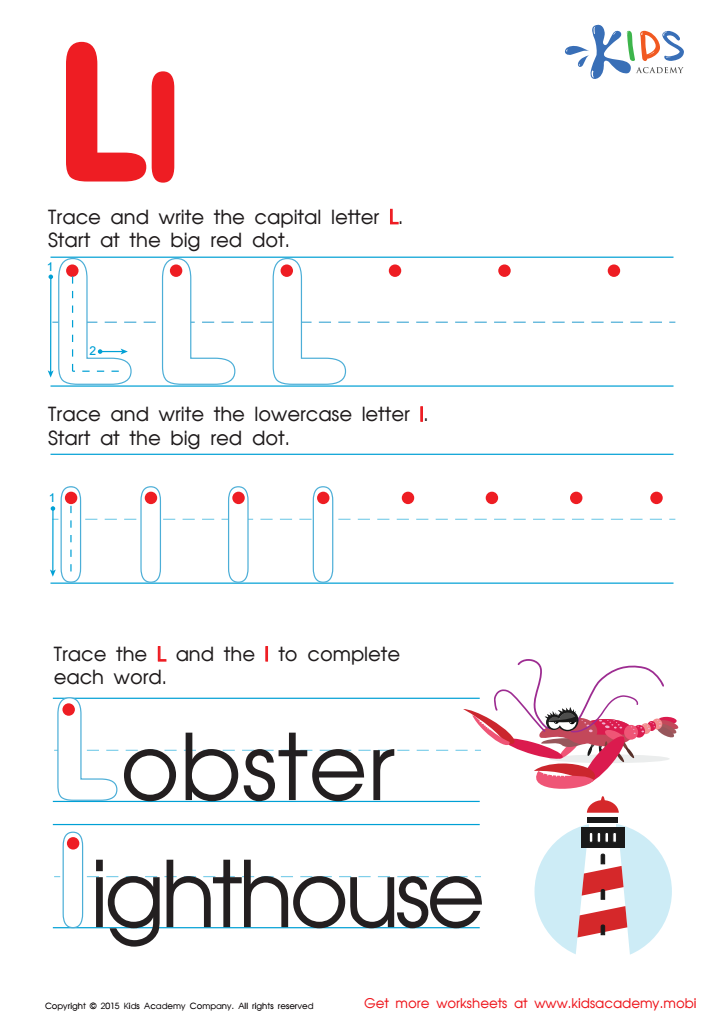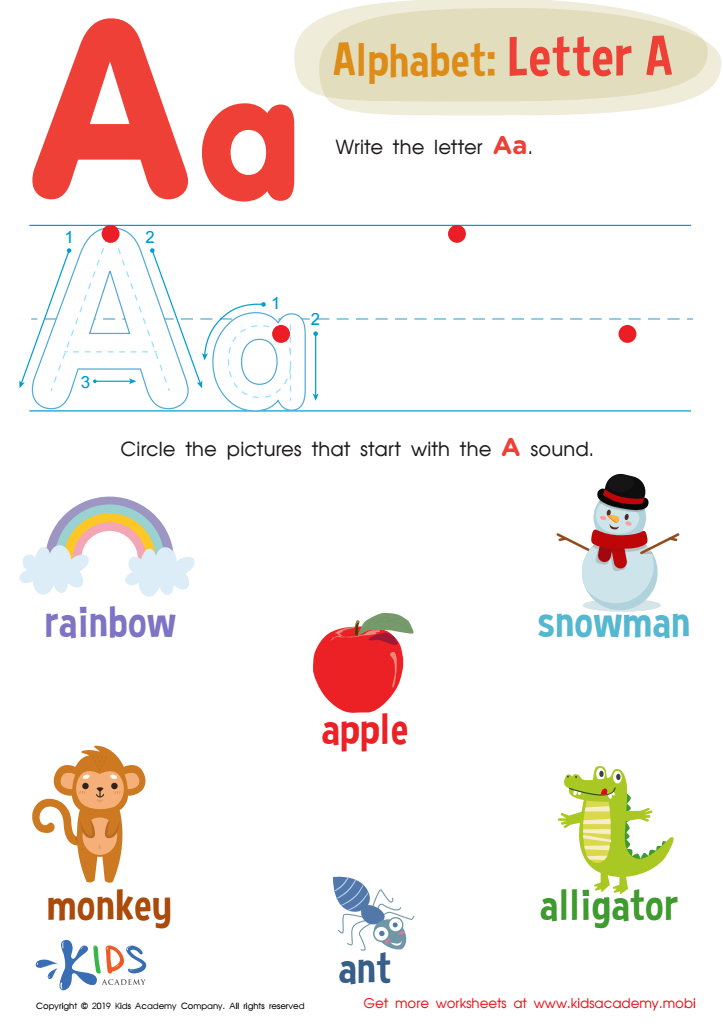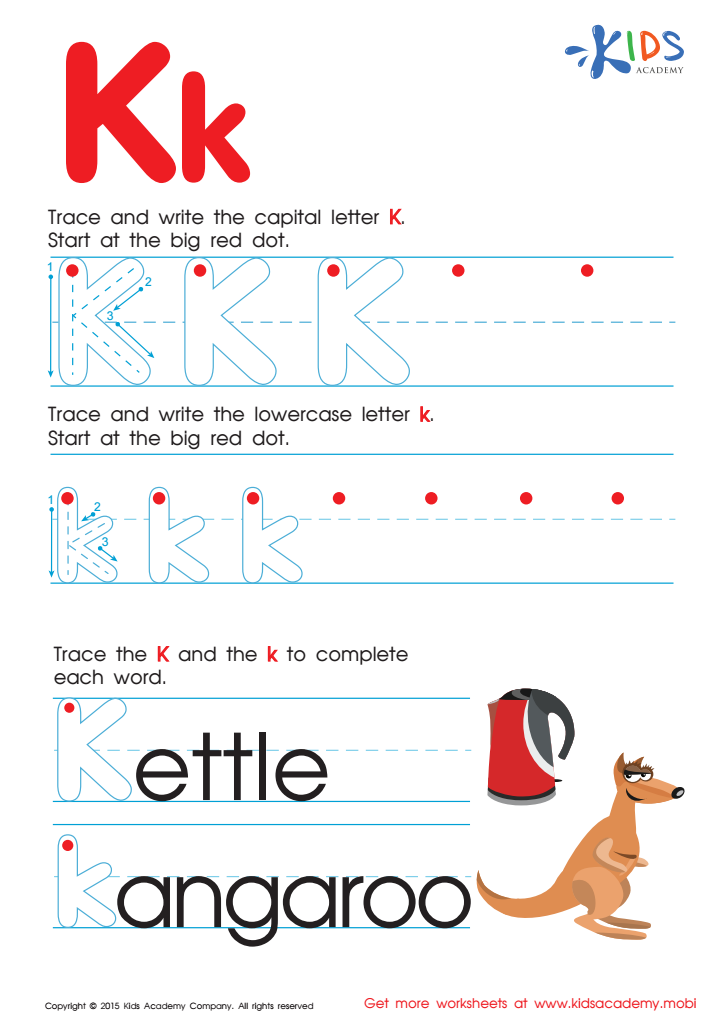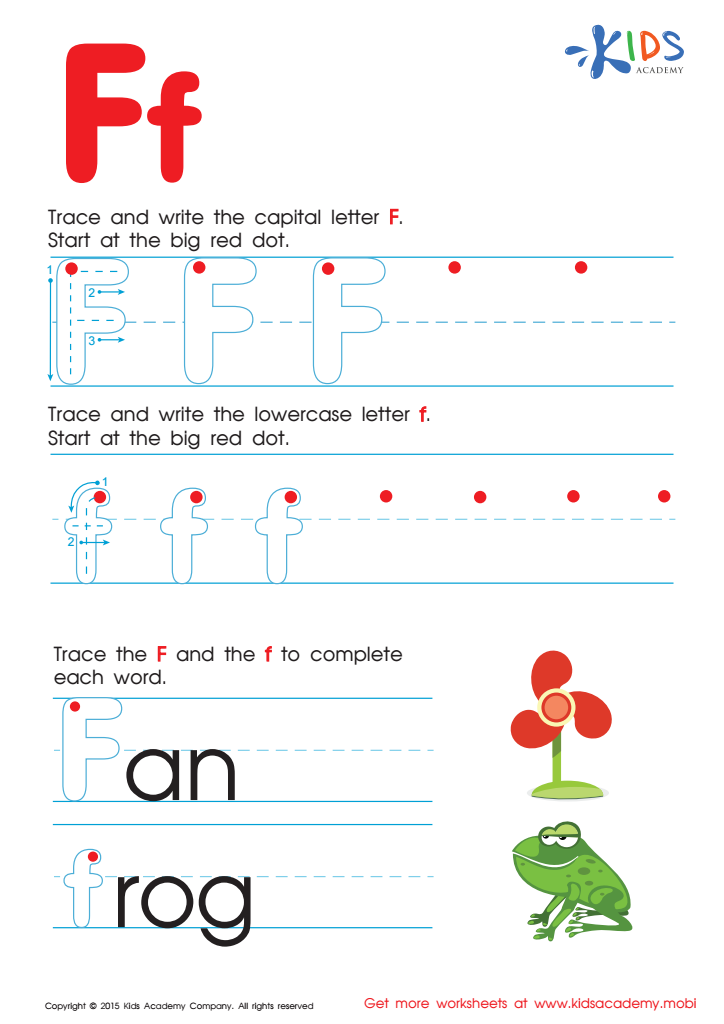Letter recognition Normal Tracing Letters Worksheets for Ages 4-6
9 filtered results
-
From - To
Discover the perfect resource for young learners with our "Letter Recognition Normal Tracing Letters Worksheets for Ages 4-6." Designed to develop early literacy skills, these engaging worksheets help children practice tracing letters, building a strong foundation in letter recognition. Each worksheet is crafted to make learning fun and interactive for preschoolers and kindergarteners. With a focus on both uppercase and lowercase letters, these activities enhance fine motor skills, hand-eye coordination, and prepare kids for successful reading and writing experiences. Start their journey towards literacy with these effective, age-appropriate tracing worksheets!


Letter P Tracing Page


Letter Q Tracing Page


Letter H Tracing Page


Letter G Tracing Page


Letter L Tracing Page


Letter A Tracing Worksheet


Letter K Tracing Page


Letter F Tracing Page


Letter D Tracing Page
Letter recognition and normal tracing of letters are fundamental skills for children aged 4-6, forming the cornerstone of their early literacy development. Parents and teachers should prioritize these activities because they establish the foundation for reading and writing, essential skills that influence almost every aspect of a child's education and future learning.
Firstly, letter recognition helps children understand that written text corresponds to specific spoken words and meaning. This skill is a crucial step towards phonemic awareness, where children learn the sounds each letter makes. Without this fundamental knowledge, children may struggle to decode words and build vocabulary, essential components of reading fluency.
Secondly, tracing letters allows children to develop fine motor skills necessary for writing. This activity not only helps them learn the correct form of each letter but also improves hand-eye coordination, muscle memory, and dexterity. As they progress, the ability to write letters clearly and efficiently increases their confidence and ability to express themselves through writing.
In summary, early proficiency in letter recognition and tracing equips children with the basic tools needed for reading and writing success. This foundation supports their cognitive development and boosts overall academic performance, making it a critical aspect of early childhood education that parents and teachers should actively foster.
 Assign to My Students
Assign to My Students















